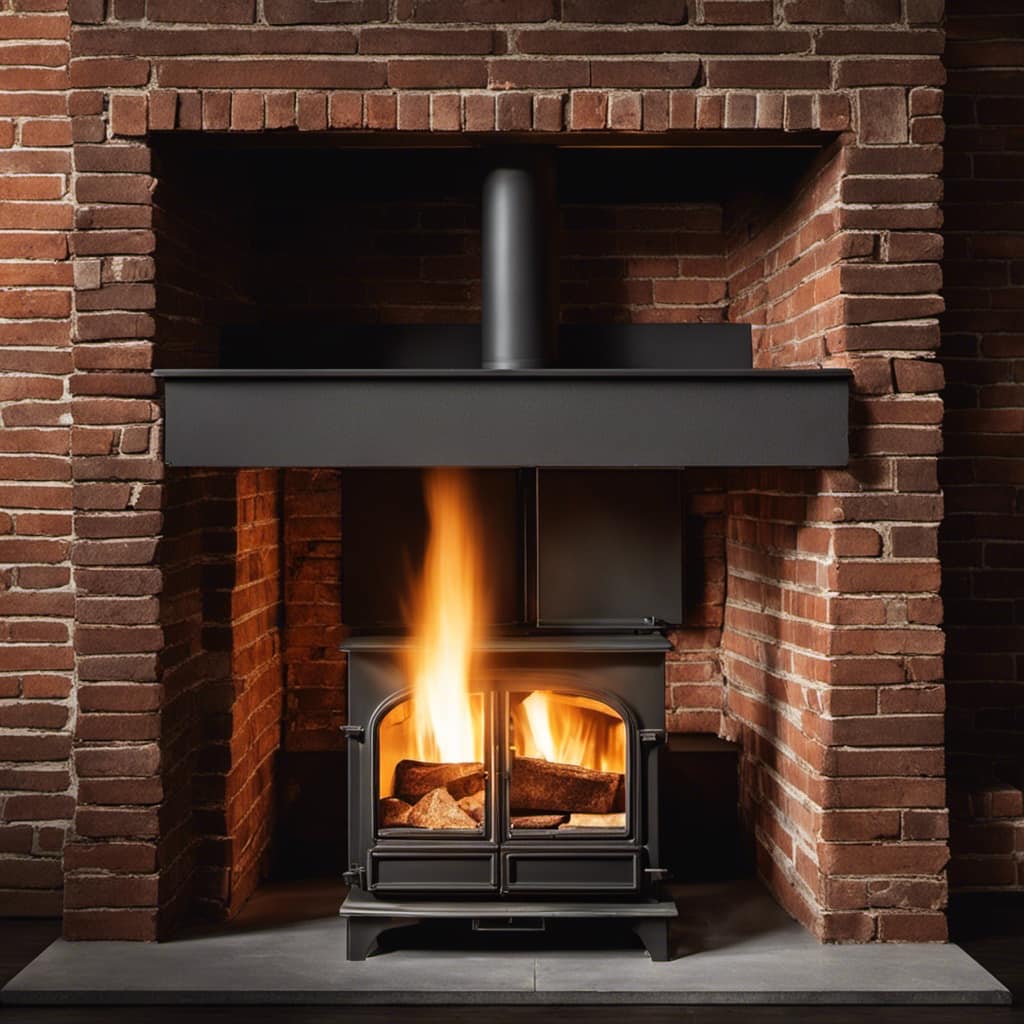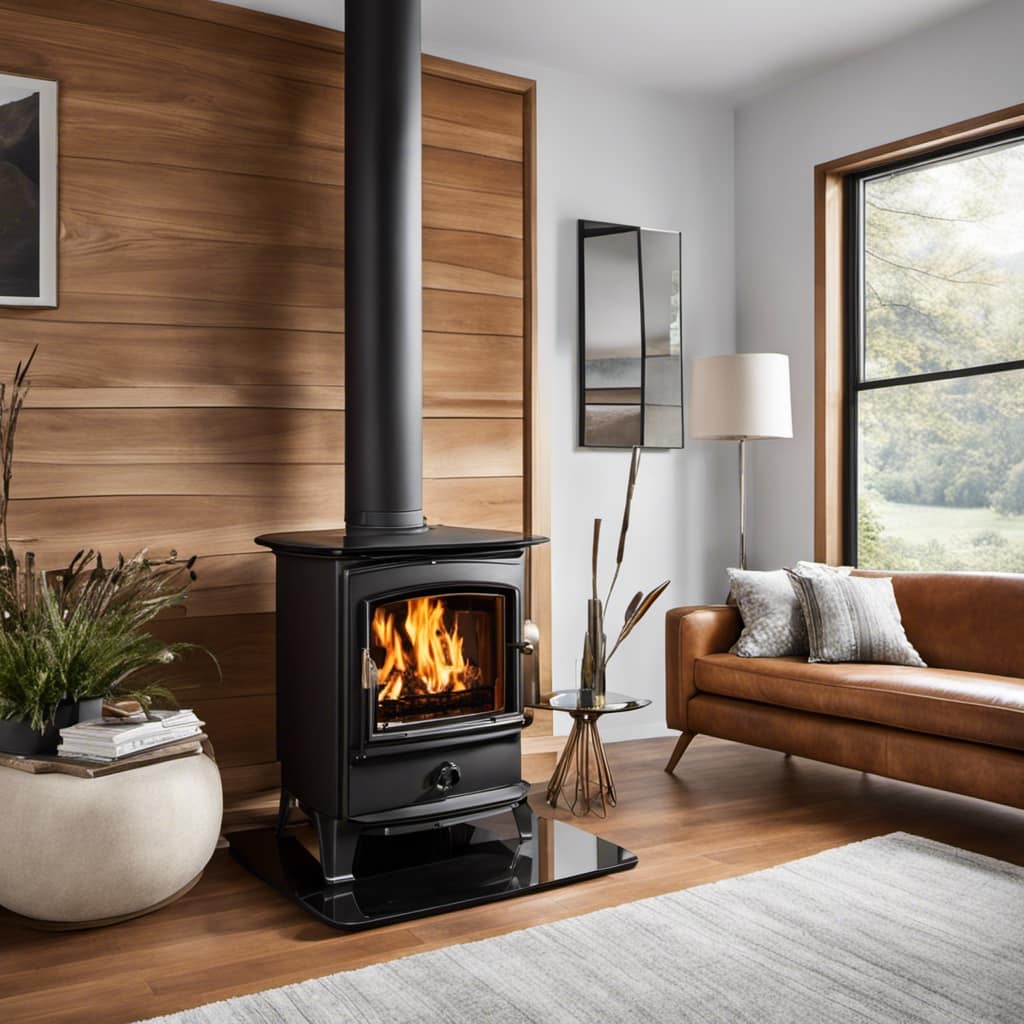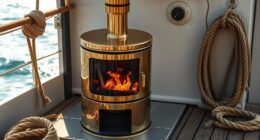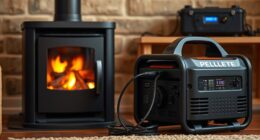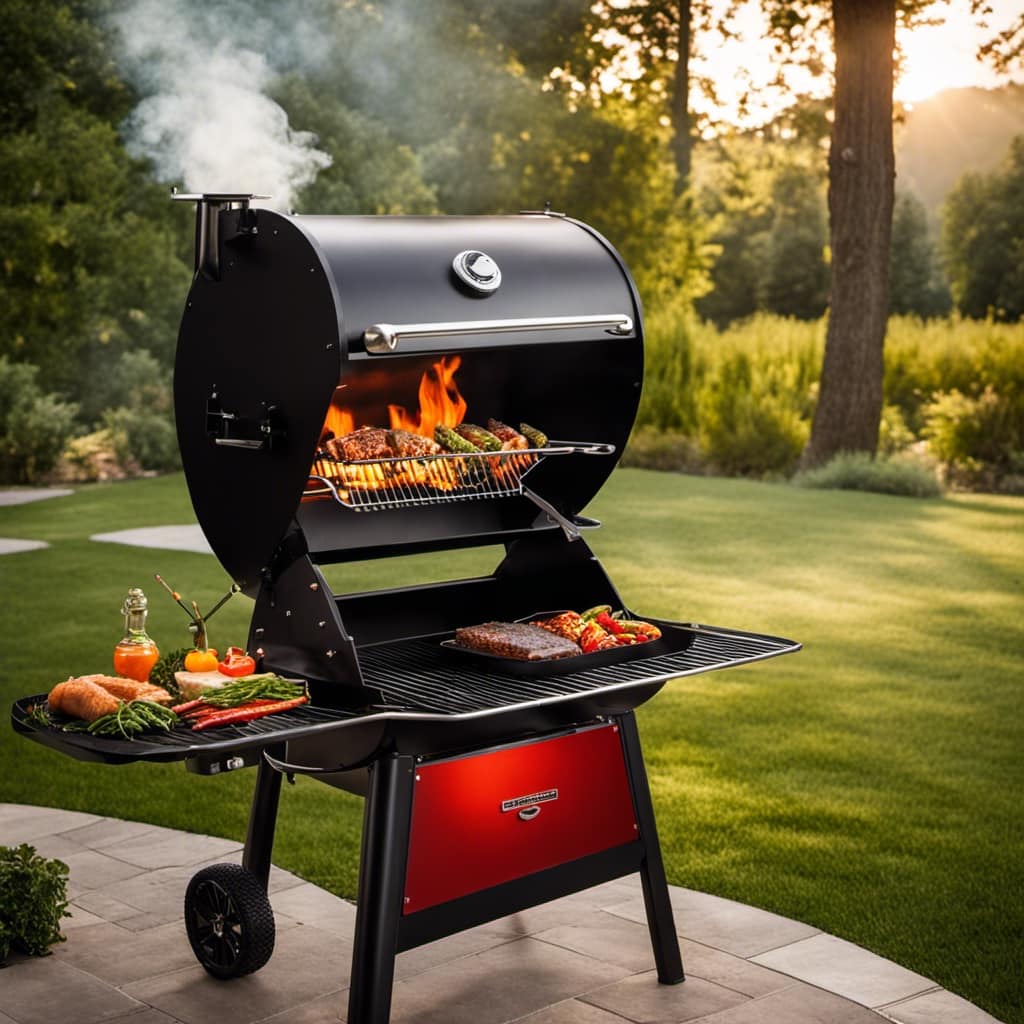
As someone who truly values wood stoves, I frequently find myself in awe of the impressive heat output of these simple yet effective appliances. It’s intriguing to think about the high temperatures these small devices can achieve and the positive impact they bring to our living spaces.
In this article, we will dive into the topic of how hot a wood stove can burn, exploring the factors that affect its temperature and the importance of controlling it for safety.
So, let’s stoke the fire and discover the secrets of wood stove heat!
Key Takeaways
- The type of wood used in a wood stove affects its temperature, with hardwoods like oak and maple burning hotter and longer than softwoods like pine or fir.
- The moisture content of the wood also plays a role in the stove’s temperature, with wet or green wood requiring more energy to burn and resulting in lower temperatures.
- Proper airflow is important for a clean and efficient burn, so the size and arrangement of the wood in the stove can impact its temperature.
- It is important to regulate the temperature of a wood stove to avoid dangers such as fire hazards, structural damage, burns and injuries, and carbon monoxide poisoning. Regular maintenance and control of air intake are crucial for safe operation.
Factors Affecting Wood Stove Temperature
I can feel the temperature of my wood stove fluctuate based on various factors.
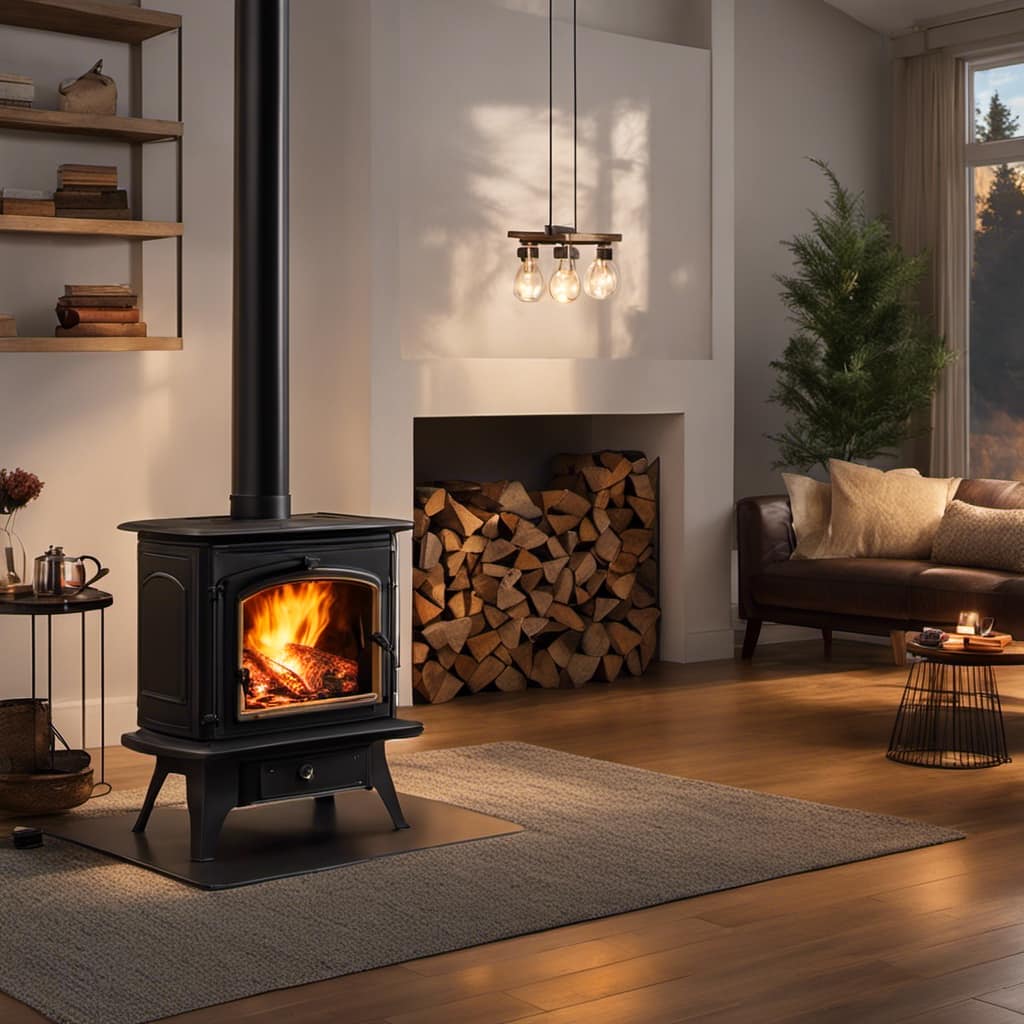
There are several key factors that influence the burn efficiency and temperature of a wood stove.
The first factor is the type of wood being burned. Hardwoods like oak and maple burn hotter and longer compared to softwoods like pine or fir.
The moisture content of the wood is also crucial. Wet or green wood takes more energy to burn, resulting in lower temperatures.
Another important factor is the air supply. Sufficient oxygen is necessary for a clean and efficient burn. If the stove isn’t receiving enough air, the temperature may drop.
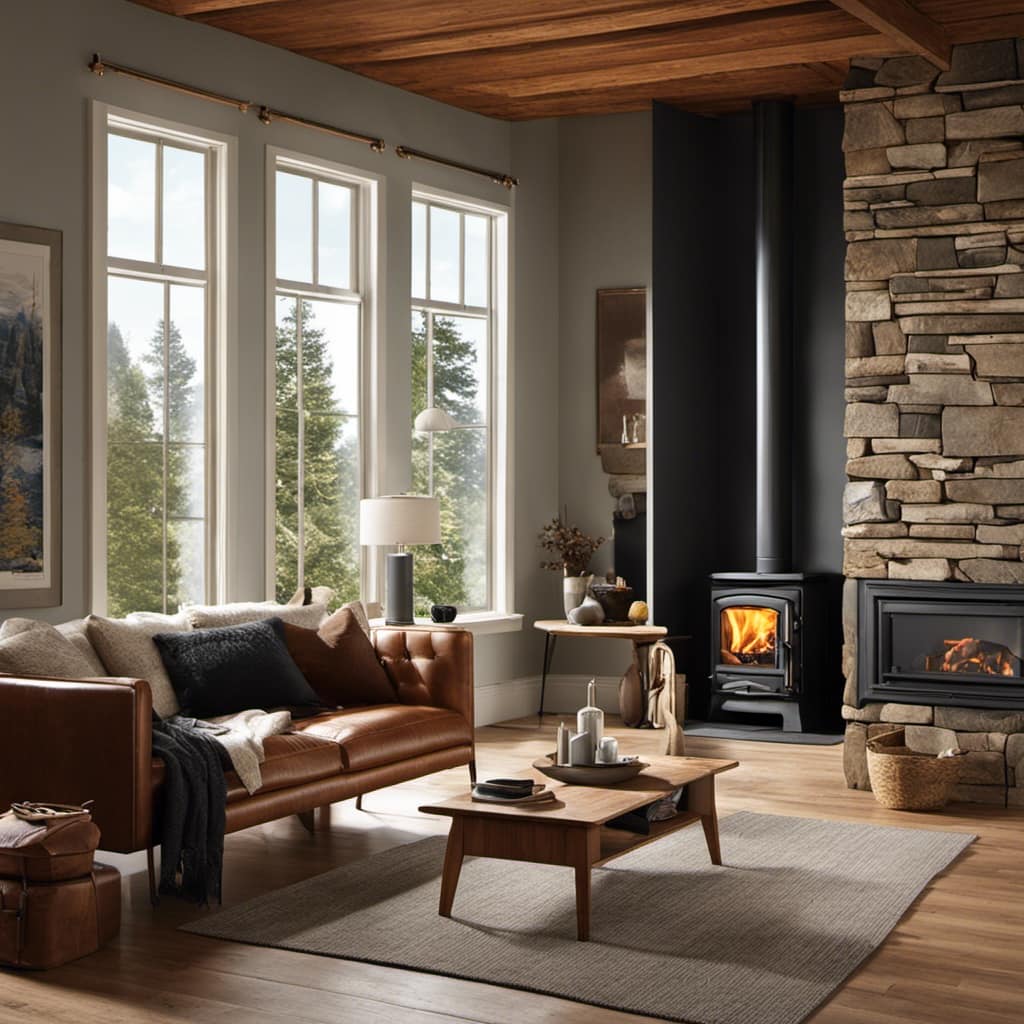
Lastly, the size and arrangement of the wood can impact the burn efficiency. Small, dry pieces of wood arranged in a stacked manner promote better air circulation and higher temperatures.
Understanding these factors is vital for maintaining a consistent and optimal burn temperature in a wood stove.
Understanding Wood Stove Heat Output
The heat output of a wood stove can vary depending on the type of wood used and how it’s properly maintained. To maximize the heat output and improve wood stove efficiency, here are some tips:
- Use seasoned hardwood: Hardwoods like oak, maple, and birch burn slower and produce more heat compared to softwoods.
- Properly stack the wood: Arrange the wood in a way that allows for proper airflow, ensuring efficient combustion.
- Keep the firebox clean: Regularly remove ashes and debris to maintain good airflow and prevent blockage.
- Control the air intake: Adjust the damper and air vents to regulate the amount of oxygen supplied to the fire, optimizing combustion.
- Use a heat reflector: Placing a heat reflector behind the wood stove can help radiate more heat into the room.
The Dangers of Excessive Wood Stove Heat
Excessive heat from a wood stove can pose serious risks, such as overheating the surrounding area and causing a potential fire hazard. It’s important to understand the dangers of overheating and the consequences of high temperatures.
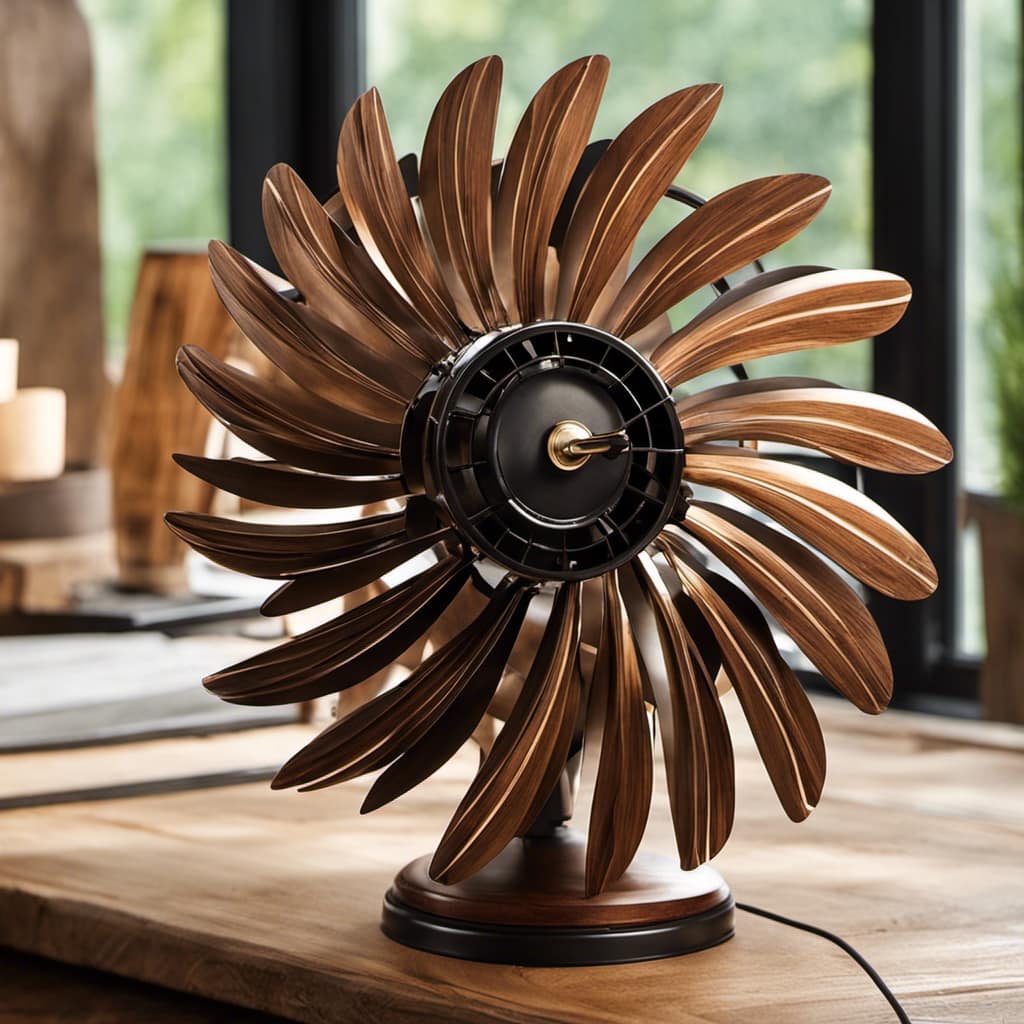
When a wood stove burns too hot, it can lead to the combustion of nearby flammable materials, such as curtains or furniture, resulting in a dangerous fire. Additionally, the intense heat can cause structural damage to the walls and floors, compromising the integrity of the building.
High temperatures can also lead to burns and injuries if someone accidentally touches the hot surfaces. Moreover, overheating can increase the risk of carbon monoxide poisoning if the stove isn’t properly ventilated.
It’s crucial to regulate the temperature and ensure proper stove maintenance to avoid these dangerous situations.
Tips for Controlling Wood Stove Temperature
To maintain a safe and comfortable temperature, it’s important to regularly adjust the controls on my wood stove. Here are some tips for maintaining wood stove efficiency and troubleshooting temperature fluctuations:
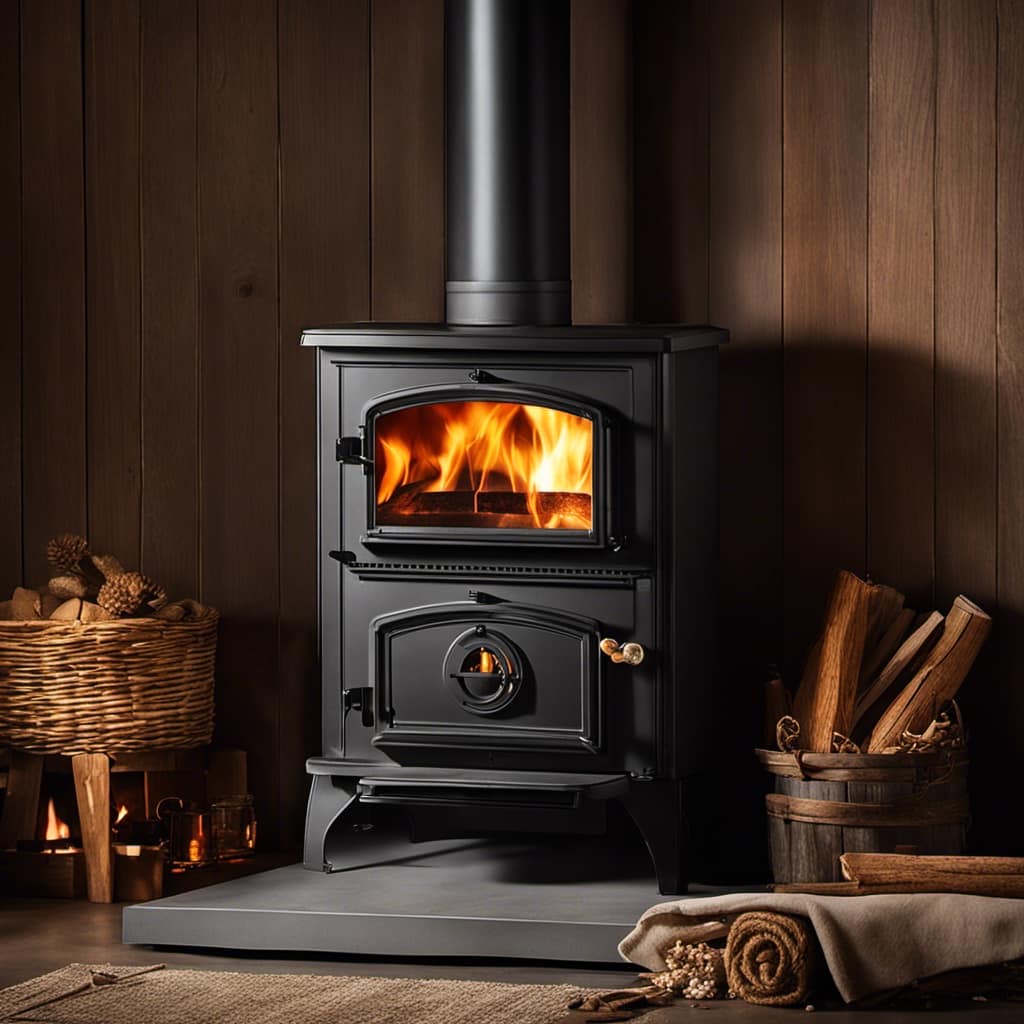
-
Clean the stove regularly to remove any buildup of ashes or debris that could hinder airflow.
-
Use seasoned firewood that has been properly dried for at least six months to ensure efficient and consistent burning.
-
Adjust the air vents to control the amount of oxygen entering the stove. Opening the vents fully will increase the heat output, while closing them partially will reduce it.
-
Install a stove thermometer to accurately monitor the temperature and make adjustments accordingly.
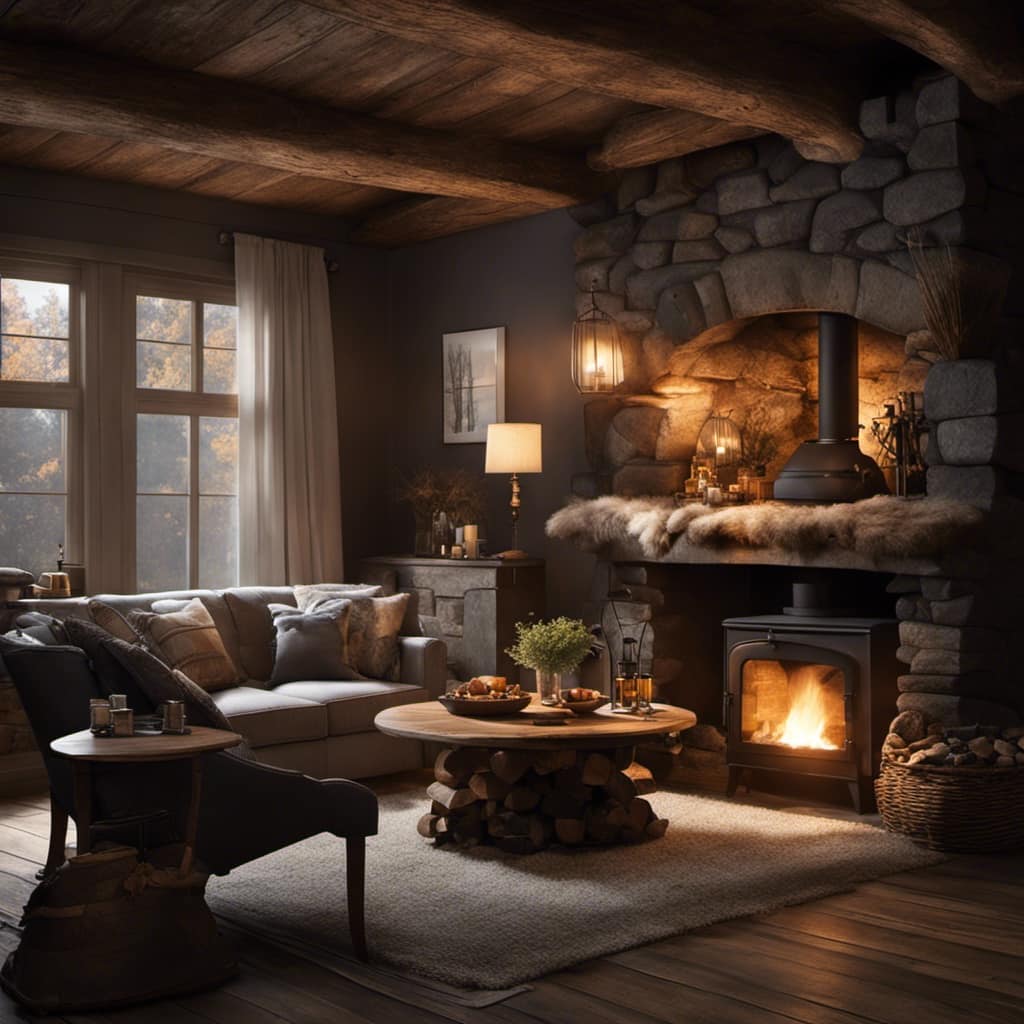
-
Consider using a heat-powered stove fan to distribute the warm air more efficiently throughout the room.
Exploring Safe Operating Temperatures for Wood Stoves
I need to ensure that my wood stove operates within a safe temperature range to prevent any potential hazards. Proper ventilation is crucial in maintaining a safe operating temperature for a wood stove. Without proper ventilation, the stove can overheat and pose a fire risk. It is important to have a clear understanding of the recommended temperature range for your specific wood stove model. Wood quality also plays a significant role in stove temperature. Wet or unseasoned wood burns less efficiently, leading to lower temperatures and increased smoke production. On the other hand, dry and well-seasoned wood burns hotter and cleaner. To better understand the impact of wood quality on stove temperature, take a look at the table below:
| Wood Type | Heat Output (BTU) | Temperature (°F) |
|---|---|---|
| Freshly cut | 5,000 – 6,000 | 300 – 400 |
| Seasoned | 7,000 – 8,000 | 400 – 600 |
| Kiln-dried | 9,000 – 10,000 | 600 – 800 |
| Hardwood | 12,000 – 15,000 | 800 – 1,000 |
Frequently Asked Questions
How Long Does It Take for a Wood Stove to Reach Its Maximum Temperature?
It typically takes a wood stove around 30-60 minutes to reach its maximum temperature. The time can vary based on factors such as the size of the stove, the type of wood, and the airflow.
Can Wood Stove Temperature Be Adjusted Easily?
Adjusting the wood stove temperature is relatively easy. By controlling the airflow and adjusting the damper, you can increase or decrease the heat output. This allows for precise control of the stove’s temperature.
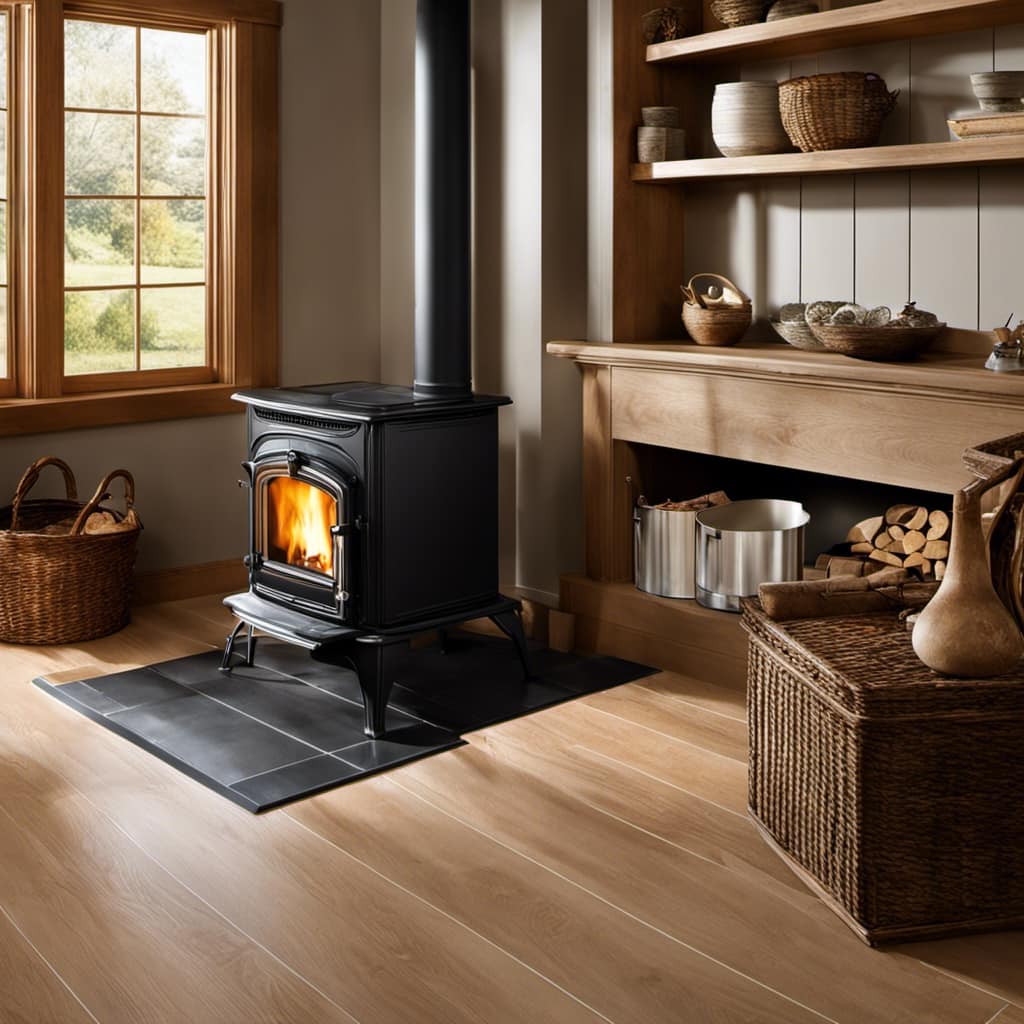
What Are the Signs of a Wood Stove Overheating?
When a wood stove overheats, it can emit a strong, smoky smell, have discolored or warped metal parts, or produce excessive heat that’s difficult to control. These signs indicate potential dangers and should be addressed immediately.
Are There Any Specific Types of Wood That Burn Hotter in a Wood Stove?
When selecting wood for a wood stove, it’s crucial to choose specific types that burn hotter. This ensures maximum heat output. Factors like density, moisture content, and wood species determine the heat generated.
Can Wood Stoves Be Used as the Primary Source of Heating in Larger Homes?
Wood stoves can be used as the primary heating source in larger homes, but it’s important to consider the size and layout. They are efficient and can provide warmth, but other heating options may be more suitable.
Conclusion
In conclusion, a wood stove can burn incredibly hot, reaching temperatures that can keep you warm even on the coldest of winter nights.
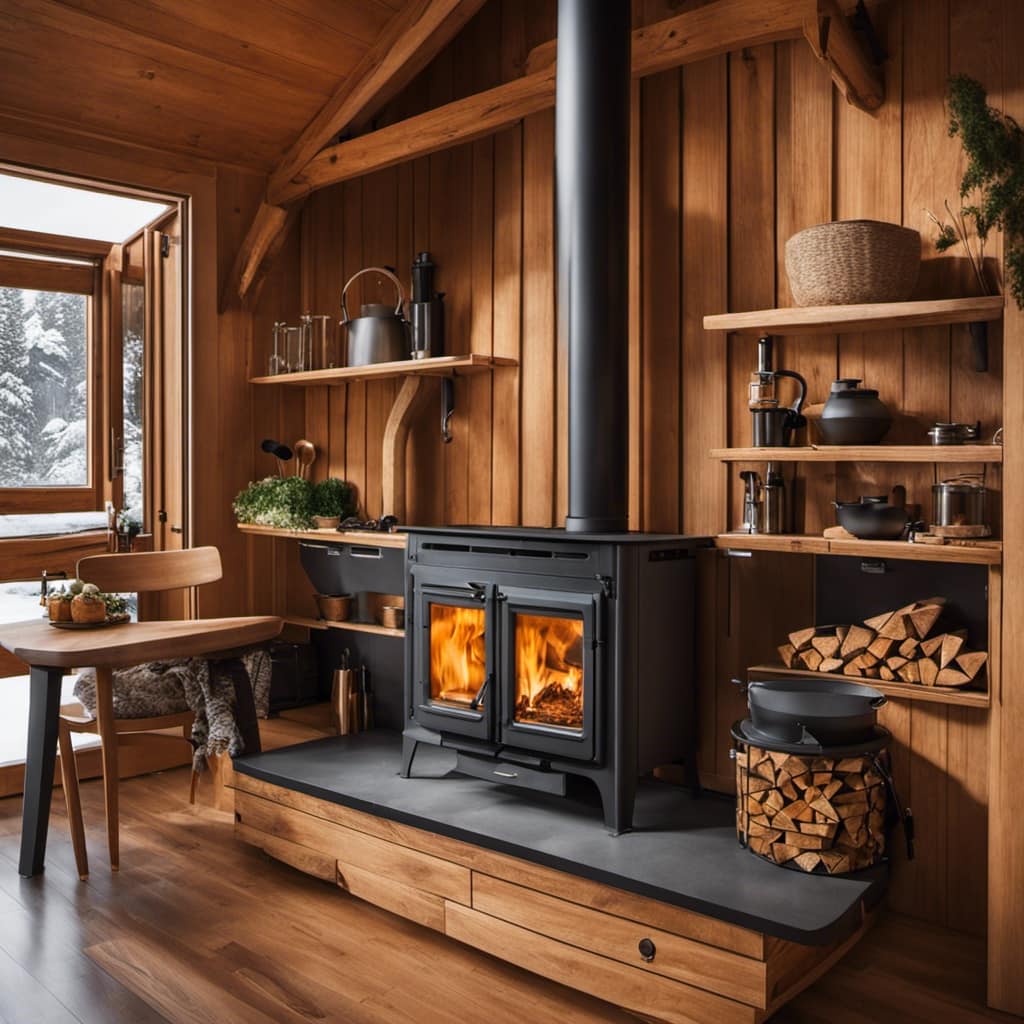
However, it’s important to be cautious and control the temperature to avoid any potential dangers.
By understanding the factors that affect wood stove temperature and following some simple tips, you can safely enjoy the cozy warmth that a wood stove provides.
Just remember to keep the fire within the bounds of a controlled inferno, creating a comforting ambiance in your home.
Growing up surrounded by the vast beauty of nature, Sierra was always drawn to the call of the wild. While others sought the comfort of the familiar, she ventured out, embracing the unpredictable and finding stories in the heartbeat of nature.
At the epicenter of every remarkable venture lies a dynamic team—a fusion of diverse talents, visions, and passions. The essence of Best Small Wood Stoves is crafted and refined by such a trio: Sierra, Logan, and Terra. Their collective expertise has transformed the platform into a leading authority on small wood stoves, radiating warmth and knowledge in equal measure.




